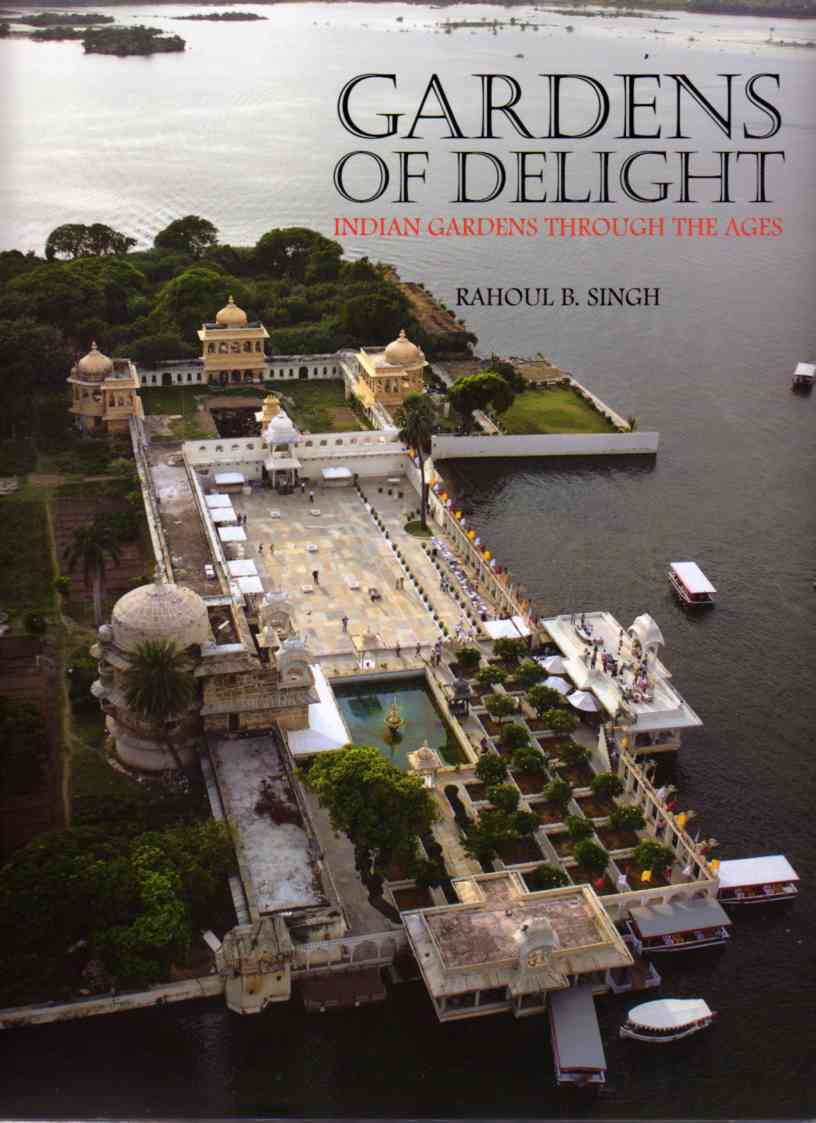We British tend to think that we invented gardens and the concept of those spaces as areas of leisure. English gardens are mimicked the world over and even in countries whose climates are unsuitable for even the notion of a cottagey, green and lush space.
 In horticultural terms India would be the head gardener and Europe would be either the apprentice lad or the pot washer, depending on which particular European gardening nation we are considering. India has been gardening for longer and on a grander scale than probably any other country, but its gardens are so often overlooked in favour of those more stereotypical examples from England, Italy and the classic ones of France.
In horticultural terms India would be the head gardener and Europe would be either the apprentice lad or the pot washer, depending on which particular European gardening nation we are considering. India has been gardening for longer and on a grander scale than probably any other country, but its gardens are so often overlooked in favour of those more stereotypical examples from England, Italy and the classic ones of France.
It’s not just that Indian gardens are beautiful but there is another element and one which is missing from most western gardens. So many plants and trees have a religious or mystical association that adds another dimension to an already exotic environment. Tulsi (sacred basil) is revered by Hindus for both its medical and spiritual qualities. This shrub is unique in that it emits oxygen at night and was therefore planted in courtyards where people would sleep to avoid the oppressive heat of summer.
Sandalwood is also known as Chandana in Sanskrit and ancient texts tell us that the scent of the tree filled the Gardens of Paradise, and it is still used in Hindu religious ceremonies. In 1792, the Sultan of Mysore declared sandalwood to be a royal tree and now every such tree has government protection to prevent illegal smuggling of this prized wood.
The Lotus is the national flower of India and sacred to both Hindus and Buddhists. It represents Lakshmi, the goddess of fortune and prosperity, and the flower symbolizes spiritual enlightenment, divinity, fertility, wealth and knowledge.
Banyan represents the gods Vishnu, Shiva and Brahma and is symbolic of life and fertility. The tree can grow to an amazing size and the Great Banyan in Howrah in the Indian Botanic Gardens is among the largest in the world.
Gardens of Delight – Indian Gardens Through the Ages charts the changes reflecting the tide of varied influences of culture and religion. Ancient paintings depict scenes of formal gardens with couches and fountains, exotic trees and flowers. These gardens were considered extensions to the inside living areas and often had pavilions and tents to provide shade and privacy.
Garden design does not remain static and this book has some stunning examples of modern Indian gardens. The swimming pool of the Oberoi Amarvilas Hotel in Agra owes much to Moghal architecture but has crisp terracing that reminds one of classic European gardens in Italy. The Baha’i Temple in New Delhi is modelled on a lotus flower. It’s a veritable Asian Sydney Opera House floating on a sea of green. The podium gardens at the Kalpataru Horizon in Mumbai blends contemporary architecture with Indian trees and shrubs. Striking.
Gardens of Delight – Indian Gardens Through the Ages is a sumptuous book and a joy to leaf through. It’s filled with ideas for those of us who want to create our own Gardens of Delight. It’s a perfect gift for gardeners and travellers and those who love India.
Gardens of Delight – Indian Gardens Through the Ages
Author: Rahoul B. Singh
Published by: Pavilion – Anova
Price: £25.00
ISBN 978-1-86205-836-1
Travel review by Chrissie Walker © 2018
